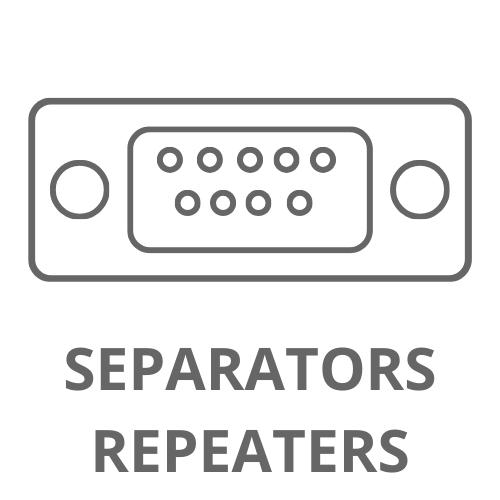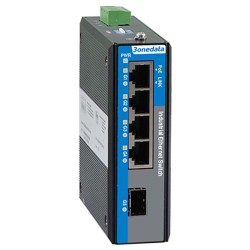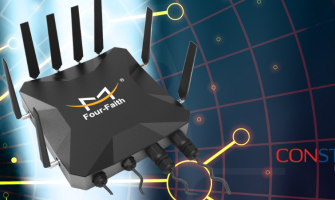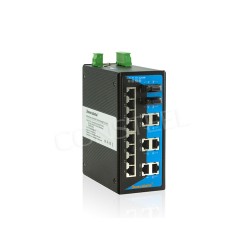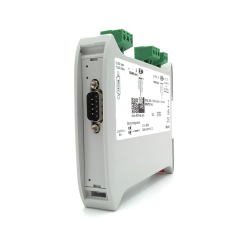What is a Gigabit Switch SFP port?

What is a Gigabit Switch SFP port?
The SFP port, or Small Form Factor Pluggable in industrial switch is designed for use with SFF (Small Form Factor) connectors and provides high speed and small physical size. With this, it allows to extend the functionality of the device with additional communication standards. The SFP port enables the gigabit switch to optical or copper links by inserting a suitable SFP module (fiber SFP or copper SFP).
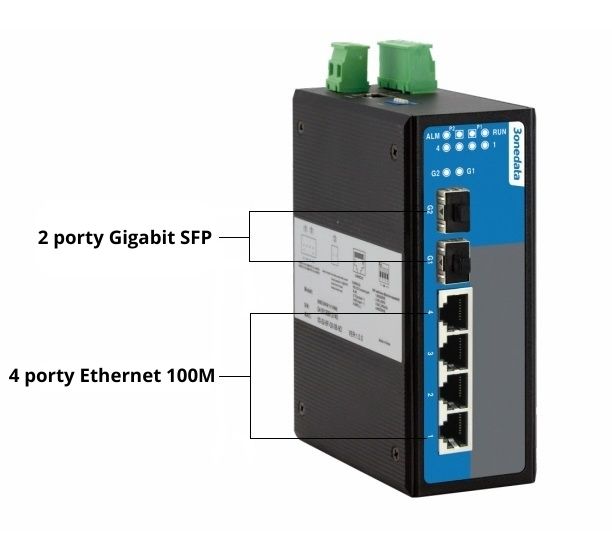
Benefits of an SFP port in a Gigabit Switch network device:
- Network flexibility - SFP modules can be integrated into any existing network infrastructure with the appropriate SFP modules thus extending it
- Performance - much smaller SFP transceivers provide the same performance as GBIC modules, and thus enable networks with higher port density
- Future security - if new standards or technologies come to market, devices equipped with SFP ports can be easily retrofitted with new modules and then support current connectivity variants
- Cost-effective - damaged modules are inexpensive to replace and do not require repair or replacement of the entire switch
- Economics - SFP modules can be quickly and easily replaced, switched to other technologies, and combined with a large number of different fiber types
Application of SFP port
SFP ports can be used in various network devices such as industrial switches, industrial routers, network cards, server serial ports or industrial computers. Port-by-port combinations are possible. These include fiber (1000BASE-SX, 1000BASE-LX/LH, 1000BASE-ZX or 1000BASE-BX10-D/U) and Ethernet (1000BASE-T). This allows the switch to be used with additional Gigabit Ethernet or Fibre Channel ports. It gives a flexible and cost-effective solution for enterprise networks, data centers, etc.
SFP modules are available in many different types. They can be used for fiber optic connections with single-mode or multimode fibers and different wavelengths. So-called LC connectors are often used to connect fiber optic cables. Fiber optic connections are secured with locking levers. SFP modules are also available for connecting twisted-pair cables (1000BASE-T). Some SFP optical modules require only single fibers. These modules use different wavelengths of light to send and receive.
Differences of SFP, SFP+ and SFP28
Most switches in large networks have at least two SPF ports. Newer devices often use the successor standards SFP+ and SFP28.
Traditional SFP modules offer speeds of 4.25 Gbps. Meanwhile, there are improved versions that enable much higher transmission speeds.
Nearly identical in size and appearance are SFP+ transceivers, but they support higher data rates of 10 gigabits per second. SFP+ specifications are based on the SFF-8431 multi-source protocol, and some SFP+ ports also support SFP modules. However, with this combination, the speed drops to 1 Gbit/s. However, it is not possible to connect SFP+ fiber to an SFP port.
Specification SFP28 derived from 100 Gbit Ethernet is designed to transmit signals at 25 Gbit/s at the same size as SFP. It supports a single line at up to 28 Gbps (25 Gbps + encoding + forward error correction). Among other things, it is used when splitting 100 Gbit ports into four 25 Gbit ports.












